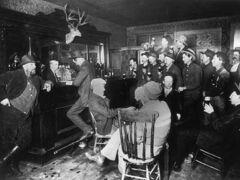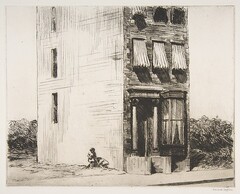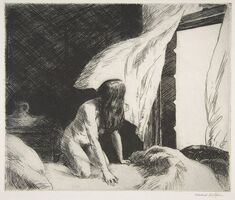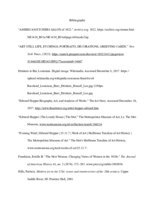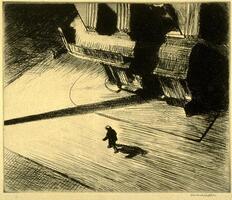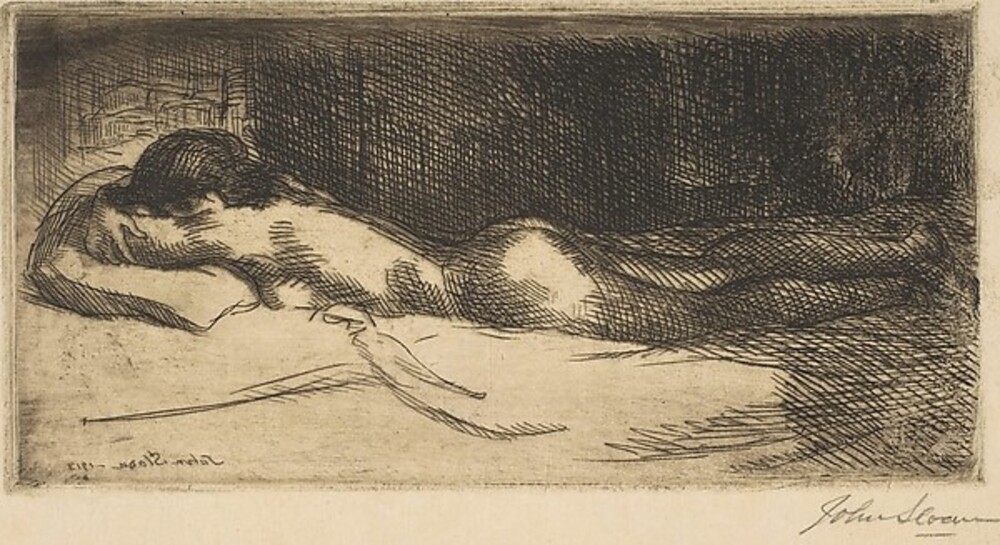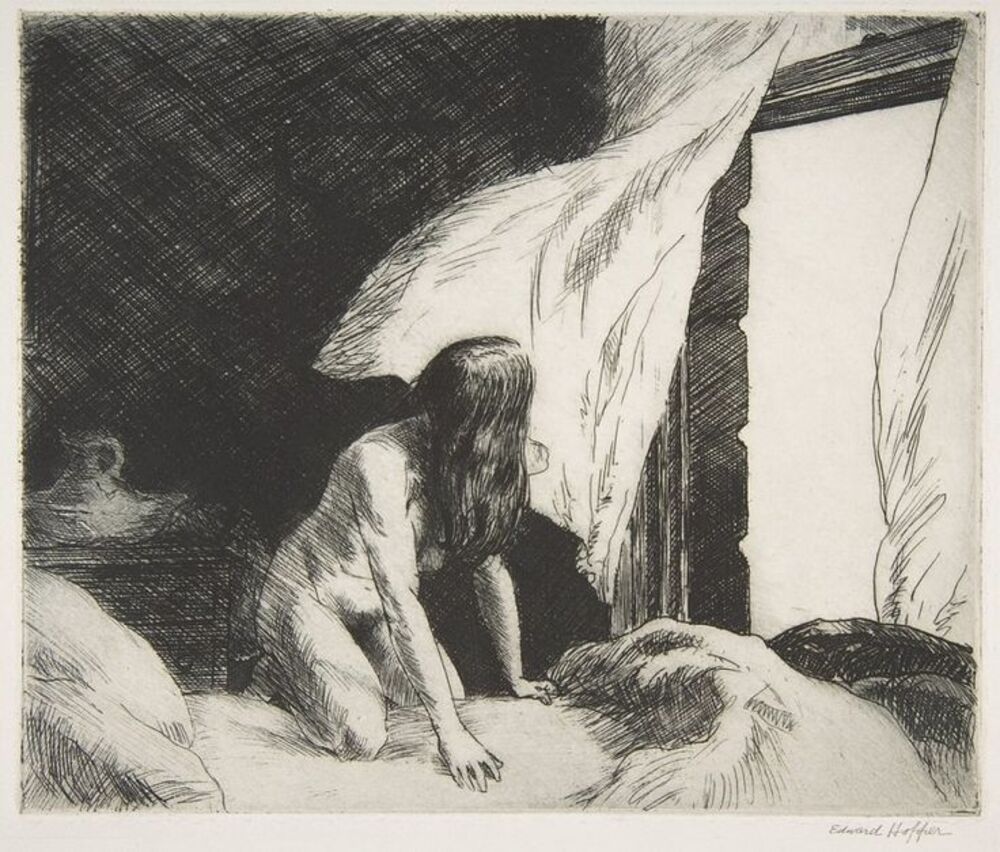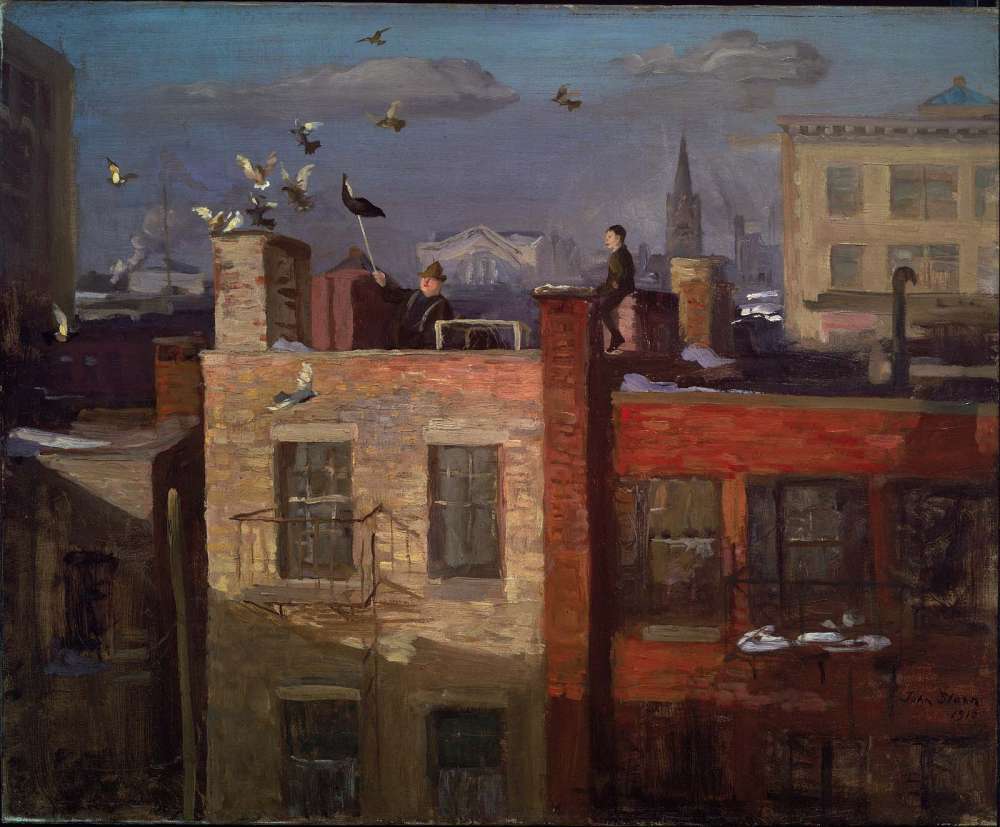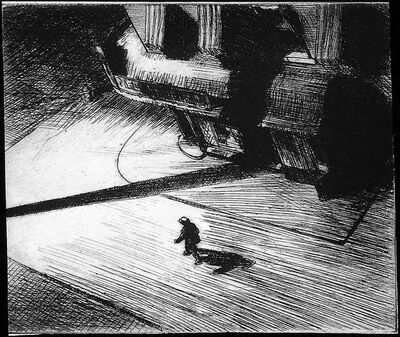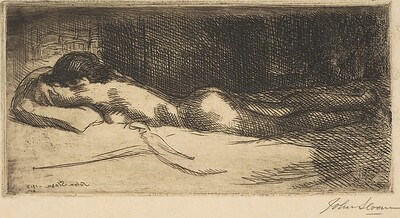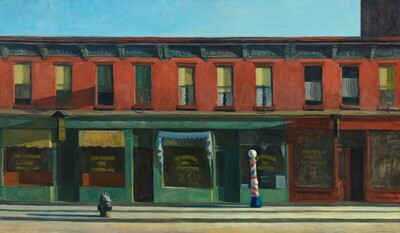Hopper's Other Works
Made in 1922, East Side Interior is one of the many etchings Hopper had produced after quitting illustration, and by 1923 a majority of his 70 works had been done in this medium. In the same year that East Side Interior was made, Hopper produced two other notable etchings that attracted media attention, The Lonely House and The Cat Boat. All three have the common theme of isolating solitary figures or forms from the outside world, whether it involves a woman in her home, an ominously separated building, or two men alone at sea. The Lonely House is especially desolate, as the blank white surface of the building at once accentuates the building’s isolation while also minimizing the size of the children in front of it, confining the human presence to only a small section of the scene. Isolation and loneliness would become a defining aspect of Hopper’s long career.
Finding it hard to settle on the subject matter for his pieces, East Side Interior is one of only a handful of works produced by Hopper that year. His fellow illustrator Walter Tittle said that he would find Hopper “sitting for days at a time before his easel in helpless unhappiness, unable to raise a hand” (Levin, 116) to the canvas. While Hopper struggled, however, American art flourished. It was a time of intense cultural fascination in industry as a result of the economic boom following the war, and thus the art world saw the beginning of American surrealism as well as the progression of precisionism, regionalism, and abstract art as a response. Thus Hopper’s works prior to East Side Interior provide an in-depth look at his inner turmoil, showcasing his own loneliness and worry over a stagnating and possibly failing art career.
Hopper’s etching Night Shadows of 1921 is an excellent precedent of his tendency to isolate, and even force viewers to sympathize with, a person in the city. The figure portrayed walking along the street is not only isolated by setting, as he walks alone on a city street, but the building he is next to is shown to be completely void of any human presence by the heavy shadings Hopper places in the windows and crevices. The forced aerial perspective makes the man appear very small and vulnerable in the big, dark city, thus forcing the viewer to feel sympathetic for the man while also undertaking similar feelings of remoteness. Preceding East Side Interior, it becomes apparent that Hopper’s personal life bleeds into his etchings to the point that many of the men he depicts can be read as a depiction of himself.
Many of Hopper’s works are heavily influenced by the Aschan artists he trained under and admired, such as Robert Henri and John Sloan. Hopper writes in his 1927 The Arts journal article “John Sloan and the Philadelphians” that “Sloan is one of those rarely fortunate artists who distort . . . like truth” and that “his figures have the unaffected gestures of the human animal when unobserved” (The Arts, v.11, p.172). The unaffected gestures he admires, as can be seen in Sloan’s Prone Nude from 1913, appear in many of Hopper’s own works, as nearly all of his subjects are depicted in moments of emotional and physical vulnerability that make their poses honest and unaffected by the viewer. Similarly, an “unconscious distortion” is found throughout Hopper’s works, including in his 1921 etching Evening Wind, in which the window appears too large in proportion to the woman and the woman’s hair is unmoved by a violent wind that causes the curtains to billow. The distortions are slight enough that they pass as reality, and thus the etching exudes a sense of peculiarity that couples with the sense loneliness to create an ominous, slightly disturbing image. It becomes apparent that many of Hopper’s works completed around the 1920s attempted to perfect the raw and peculiar feelings of desolation that he wanted to instill in his art, and thus East Side Interior can also be analyzed as practice in creating such effects.
Hopper also highlighted Sloan’s oil painting Pigeons from 1910 in his article. The focus on cityscapes and “golden hour” lighting in Sloan’s oil paintings are evident throughout Hopper’s works, such as in his 1930 oil painting Early Sunday Morning. Although the painting was done roughly eight years after East Side Interior, it is an excellent example of Hopper’s exploration of Sloan’s idea of unobserved scenes, with Hopper being quoted as debating “what a room looked like when there was no one to see it, nobody looking in, even…” (Lubbock). Early Sunday Morning emphasizes the emptiness and loneliness of the city while hinting at a slight human presence though the presence of shops and various curtain lengths. It even applies Sloan’s idea of realistic distortions by elongating the shadows and view of the scene beyond the natural eyesight of the human vision. Compared to his 1920s etchings, his later works show a deeper commitment to the style and principles behind Sloan’s work by using color to more realistically portray the loneliness of the city, perhaps indicating that many of Hopper’s 1920s etchings were attempts to mimic Sloan’s lighting and distortions as Hopper continued to develop his own style.
Hopper, as an artist of the loneliness and the unrelenting passage of time in the city, looked to Sloan as an early example of isolating people within larger urban scenes that appear cold, empty, and uncaring, while using variations of lights and darks to bring out the emotion that the subjects must be feeling. His etchings are a brief yet important foray into learning how to isolate people while portraying them as mentally and physically vulnerable and damaged. A gloomy and heartbreaking style, Hopper’s work may still offer hope, however. Every scene can be read as a moment of quiet, a moment exactly before or after an action, and thus in every one of Hopper’s characters is the dormant yet very real possibility to bring about a new action and change and possibly even find happiness in such an emotionally desolate place. East Side Interior is just one of his many heartbreaking yet somehow hopeful works across his long career.
Created For
K-12 EducatorK-12 Student
Museum Visitor
UMMA Docent
UMMA Staff
University Faculty
University Student
Rate this Resource
AVG: 0 | Ratings: 0
& Author Notes
All Rights ReservedLast Updated
January 30, 2018 3:53 p.m.Report
Reporting Policy

